Experimenting on homemade pizza Margherita with cheap and expensive ingredients
Written on January 1st , 2021 by Debashmita Poddar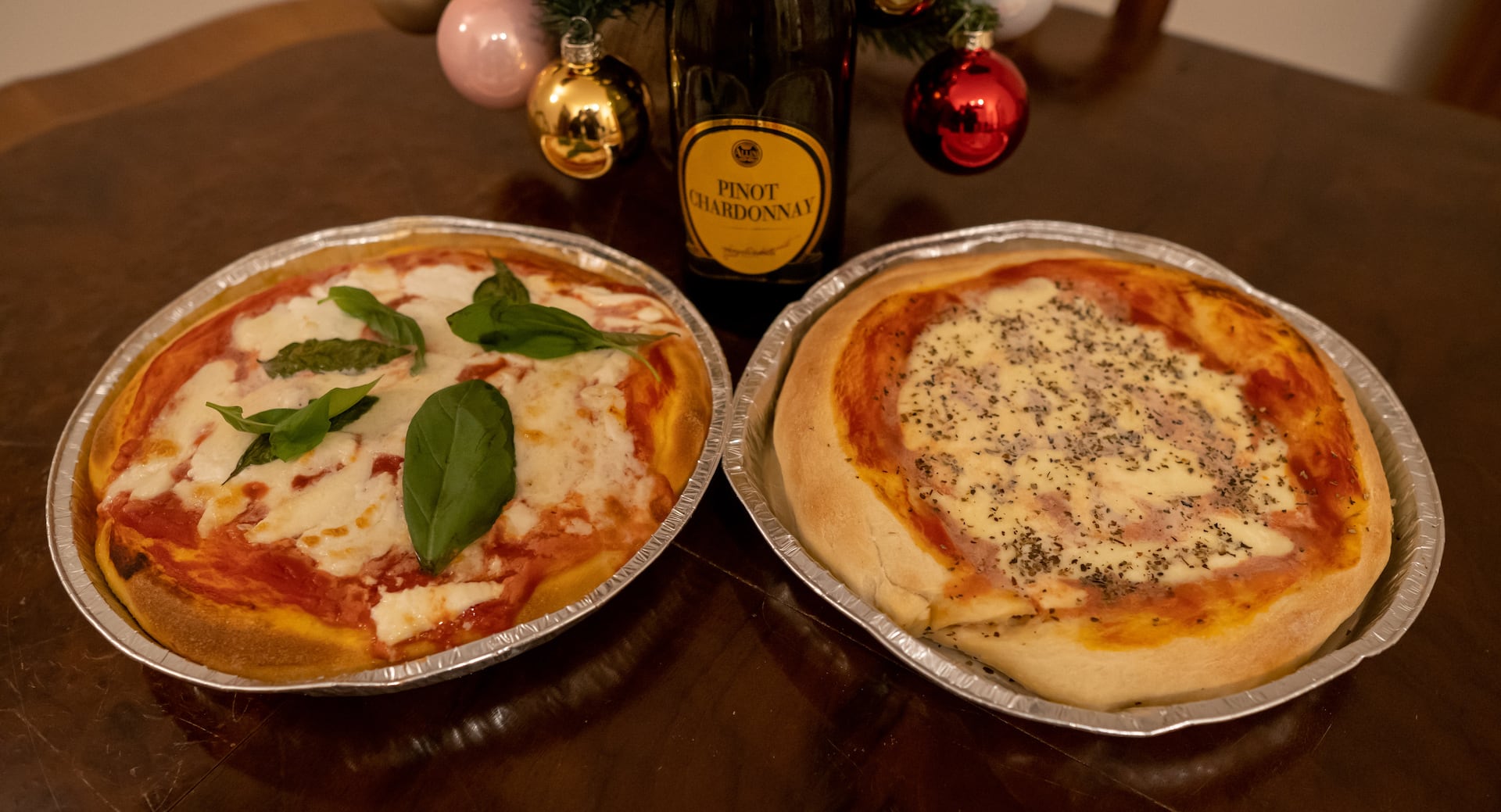
Happy new year, everyone! With Italy being a red zone from the 24th of December to the 6th of January, our New Year’s Eve wasn’t as exciting as past years. We decided to stay at home and have a quiet and cosy way of spending the last few moments of 2020. However, we cannot let the lockdown ruin our dinner plans. So after a sumptuous lunch comprising of homemade Carbonara and red wine, we decided to perform an experiment. Supermarkets have different brands and prices for a specific piece of product. Normally, as students, we tend to get our hands on the cheap supermarket brand products and items that are on sale. But the question is, how different will the food taste if we incorporate a higher branded product instead of the regular ones we buy.
To answer this question, we decided to prepare a recipe with all the expensive ingredients, and then make the same food with the cheapest ingredients of the same kind we find in the market. To start off, it is always a good idea to prepare something that will not take too many ingredients, and is not so complicated to cook. Since we are Italy, we needed to make something Italian, as we will have more options. We decided upon the humble pizza Margherita, or more commomy know as pizza Napoletana. This is a classic pizza from Naples, and is made with ‘00’ flour, yeast, tomatoes, mozzarella, and topped with basil.
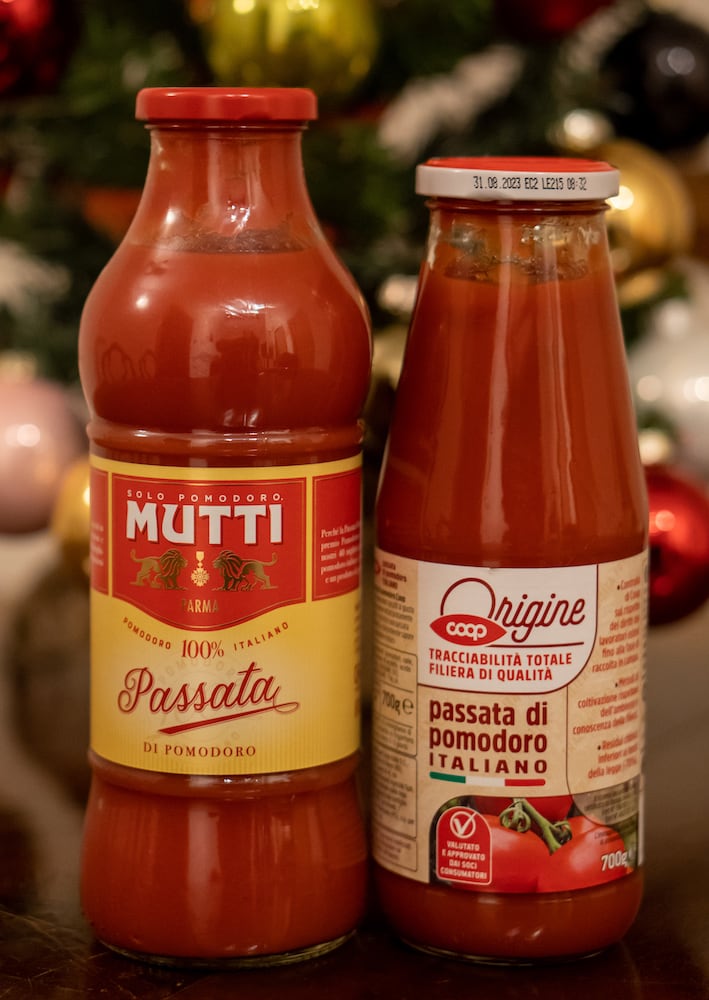
We used tomato paste, or as the Italians call it passata di pomodoro, instead of fresh tomatoes because we wanted to check out the ingredient by itself and not the vegetable. For the expensive tomato sauce, we chose the one from Mutti. This brand is from Parma, which is a food haven of Italy, and cost 1.49€ for a bottle of 700g. The cheap one was the supermarket brand Coop and costed us 0.55€ for a bottle of 800g. Normally, tomato paste in Italy comes in bottles of 700g.
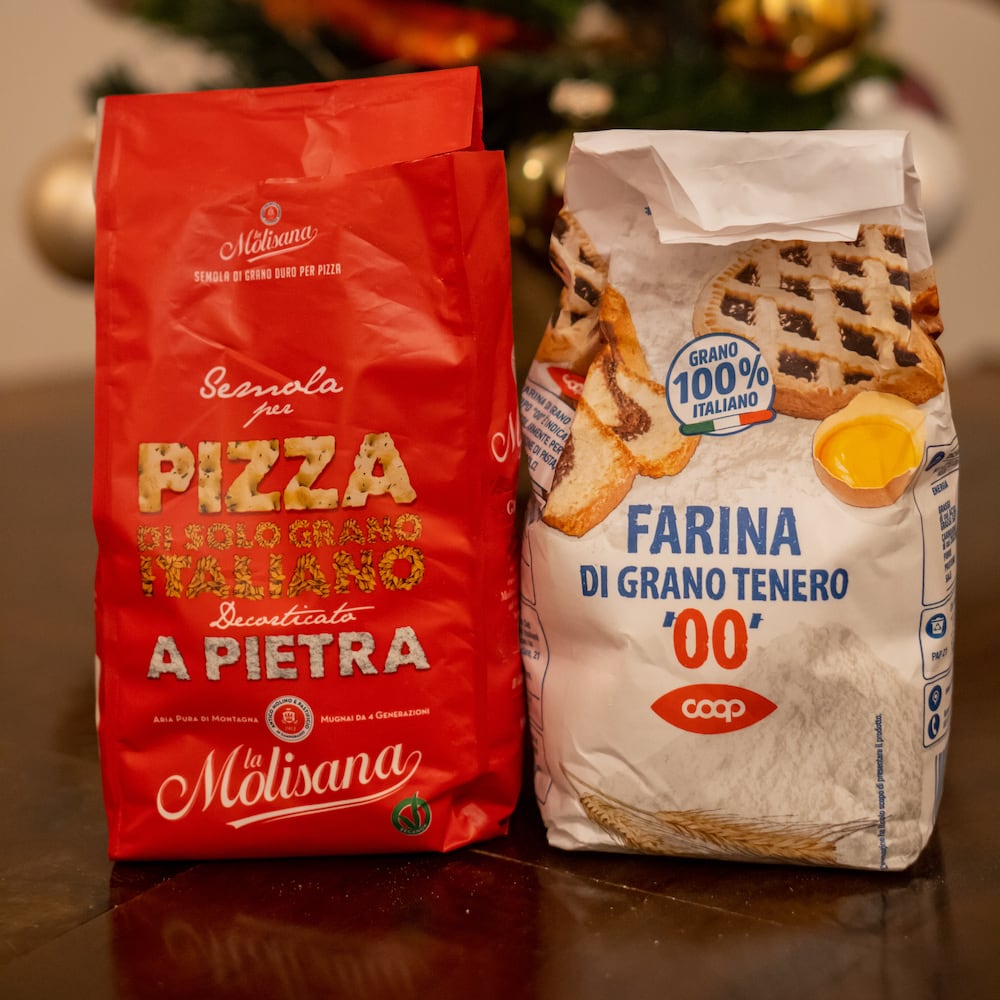
Next up, we had to get a packet of flour. The expensive flour we got was made especially for pizza dough and cost 1.60€ for 1kg, from the brand La Molisana. To be more precise, it was not wheat flour, instead very finely grounded semolina. The cheap one is the more traditional ‘00’ flour from the supermarket brand Coop, priced at 0.44€.
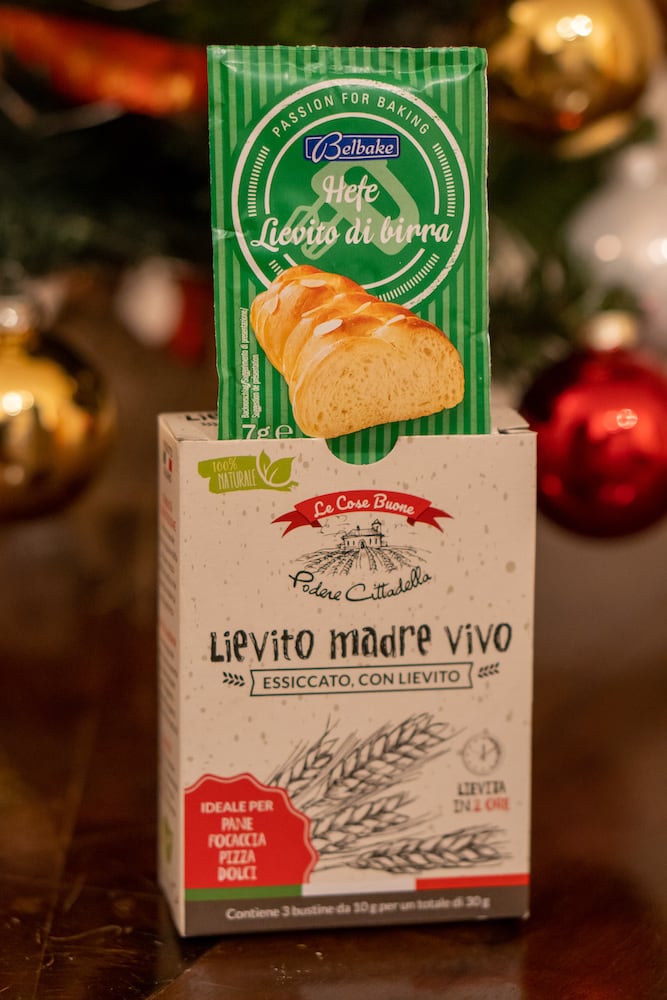
The yeast was a bit of a hassle to decide on, and we just chose from the cheapest and the costliest one available. The cheap yeast was a standard dry beer yeast for making bread. It is from a German brand called Belbake and one box contains three 7g packets for 0.99€. The expensive one was a dry starter yeast, or lievito madre. This is more similar to the kind of yeast used in traditional Italian recipes for bread and pizza. It costed us 1,65€ for three bags of 10g each.
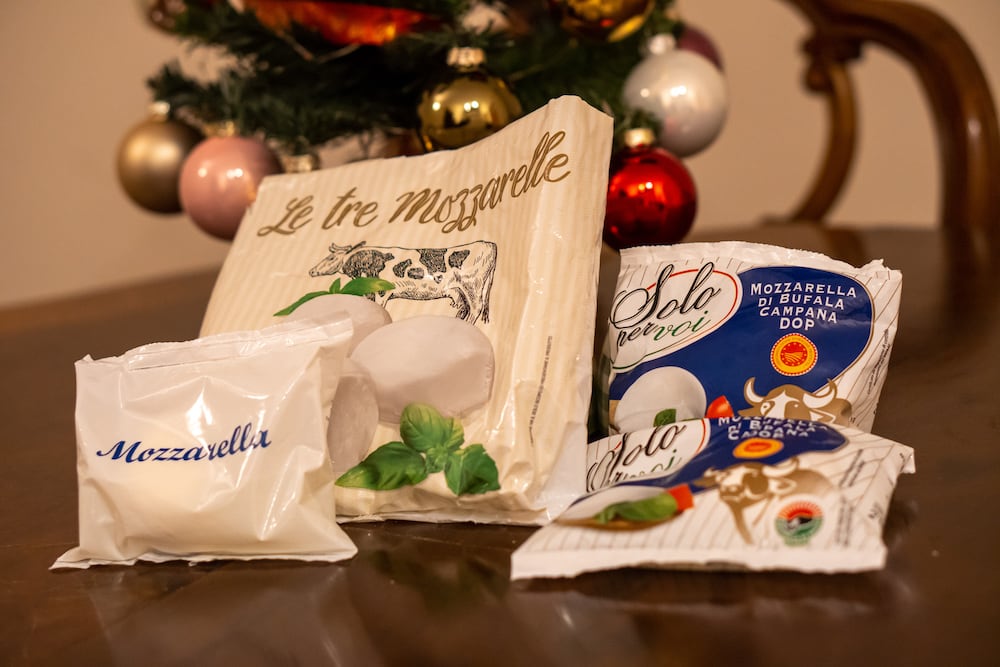
We move on to out favourite ingredient, mozzarella. Now, the traditional receipe uses the one made from the milk of water buffaloes in Campania. This cheese is popularly known as Mozzarella di Bufala Campana, which has a label of protected designation of origin (PDO). Each packet of 125g (excluding the water) was 1.25€. The cheap mozzarella is made from cow milk and each packet of 125g was 0.53€.
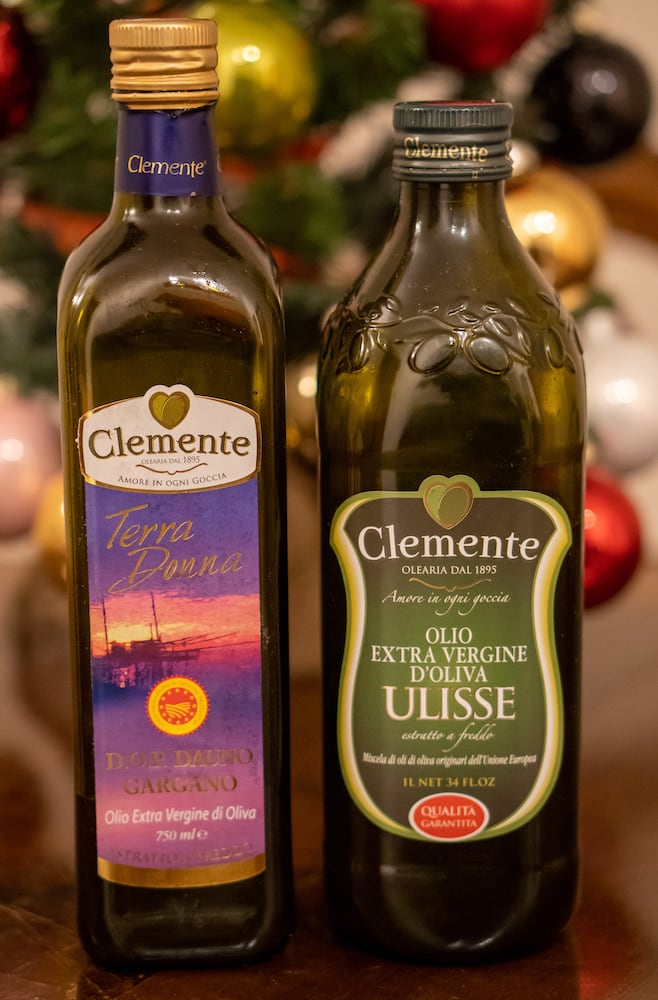
We got two bottles of olive oil from the same brand called Clemente. The only difference is that the expensive olive oil carries the Dauno Gargano PDO label (i.e.,the olives used for extracting the oil are grown in the Gargano region following traditional techniques). The bottle is of 750ml for a price of 4.81€. Meanwhile, the cheap bottle of olive oil was made from olives grown around the European Union, and a litre was priced 2.99€ with a discount (original price was around 5.61€).
The only seasoning in the list was basil (basilico in Italian). We decided to use fresh basil for the expensive pizza and dried ground basil leaves for the cheap one. The fresh basil was 0.98€ for 30g and the bottled Carrefour brand dry basil was 1.69€ for 15g. The fresh basil costs more when we compare the longevity and density with the dried bottled one.
We used the same salt, sugar and water (here in L’Aquila, the tap water comes from the mountains, so it tastes better and fresher than bottled water) for preparing both the doughs. The immediate difference that we noticed while preparing the expensive dough was the texture: it feels very rough while mixing, because of the fine grains of semolina, but without any lumps. Once we start kneading, it dough starts getting softer and smoother as it absorbs the water and feels almost like a baby’s butt. The normal ‘00’ flour, on the other hand has the same texture as a bread dough and feels very tough while kneading, although it is also quite smooth.
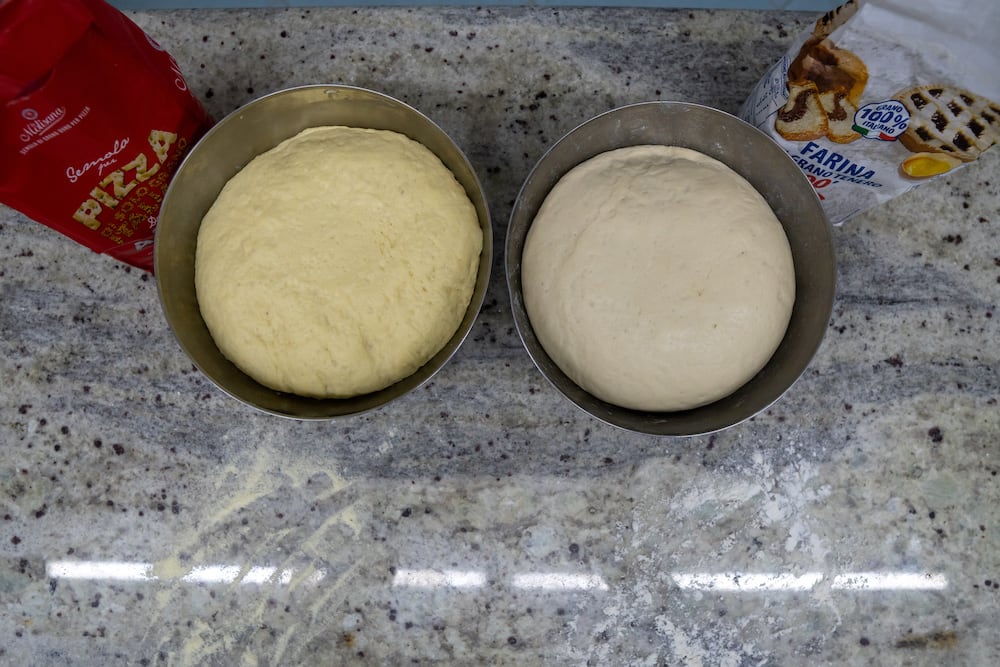
When we compare both the doughs by its appearence, the semolina dough has a slight yellow tinge to it compared to the flour dough, which is white. The picture above is after 7 hours of resting both the doughs (the recommended resting time is 6-8 hours). While slicing the mozzarella, we felt that the buffalo milk mozzarella has a firm layer on the outside, and a creamy core inside. The cow milk mozzarella was soft and homogeneous. Meanwhile, the supermarket brand tomato paste was very watery, as compared to the expensive one, which was quite viscous.
Moving on to the pizza preparation, we followed the recipe and technique of Chef Davide Civitiello as reference. We made both doughs at the same time, using approximately the same amount of ingredients for a better comparison. Each dough started with 100ml of water per pizza and 150g of flour; more flour was added while mixing and kneading in order to achieve the desired consistency. The pictures of the assembled pizzas before putting it inside the oven are below. Each pizza went in the electric oven for 15 minutesx at a temperature of 250°C: they turned out as per our expectations. Once the pizzas were prepared, we popped a bottle of Pinot Chardonnay to celebrate the fact that we survived the year 2020.
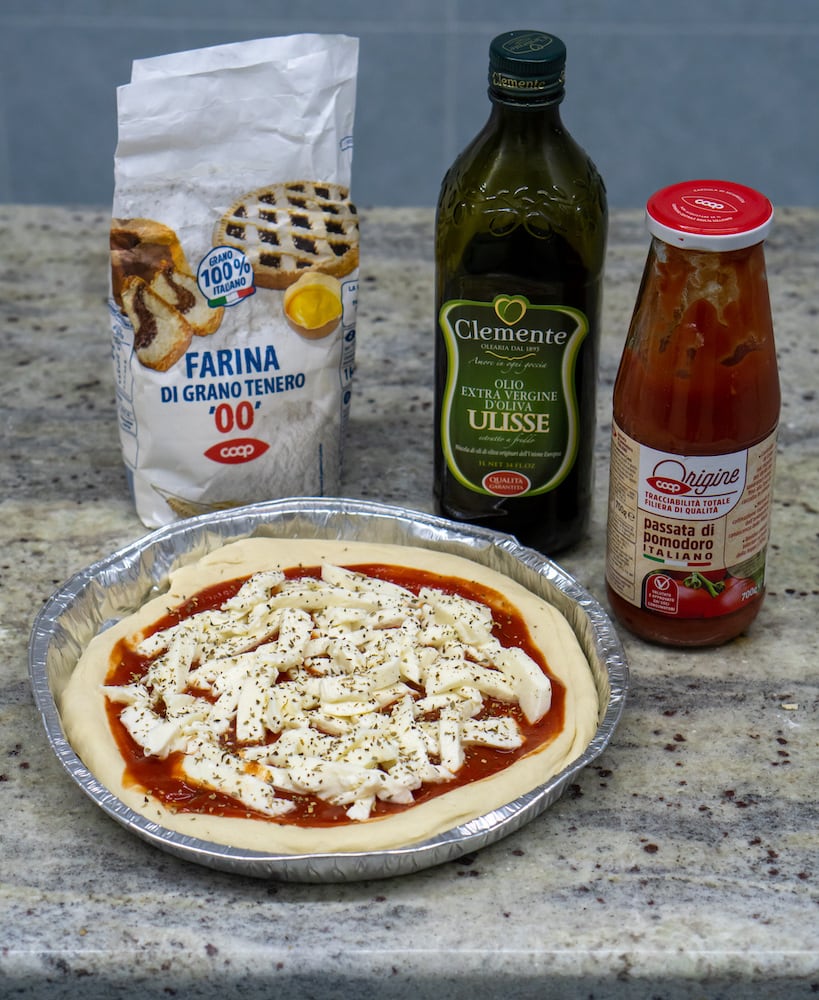
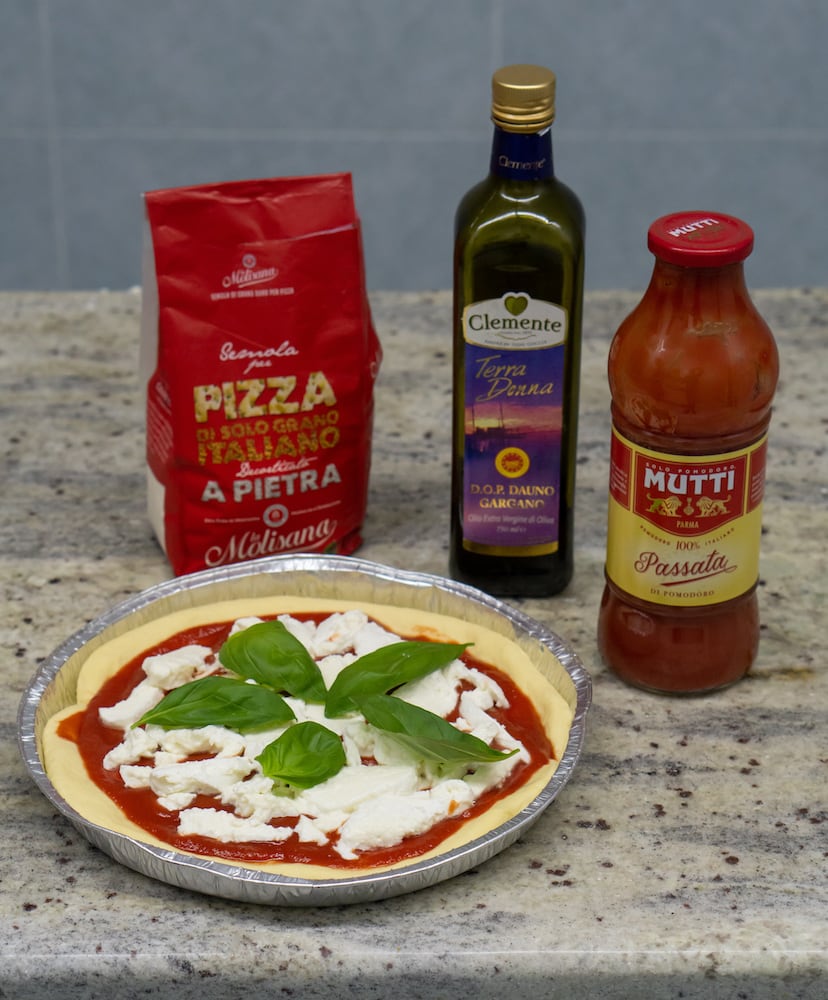
We started out eating the pizza made out of the cheap supermarket brand ingredients. On the first look, it was very watery because of the tomato sauce’s consistency, and the dough below was extremely wet and soggy because of the excessive liquid. On the brighter side, the flavour was quite good. The dough was soft, although slightly chewy, and the combination of tomato sauce, mozzarella and basil worked as expected.
Coming to the pizza prepared with the expensive ingredients, it did not have the same problem of sogginess, and we could immedialtely taste the difference. The dough was extremely flavourful because of the semolina, the tomato paste was thick and rich in flavour, and the stringy mozzarella almost melts in your mouth. The cow milk mozzarella felt very chewy as compared to this one. And of course the fresh basil clearly elevated the taste. It was no longer a seasoning like the dried flakes, but an integral part of this classic dish. The picture below shows the two pizzas side by side. The left one is made with expensive ingredients, and right one with the cheap ingredients.
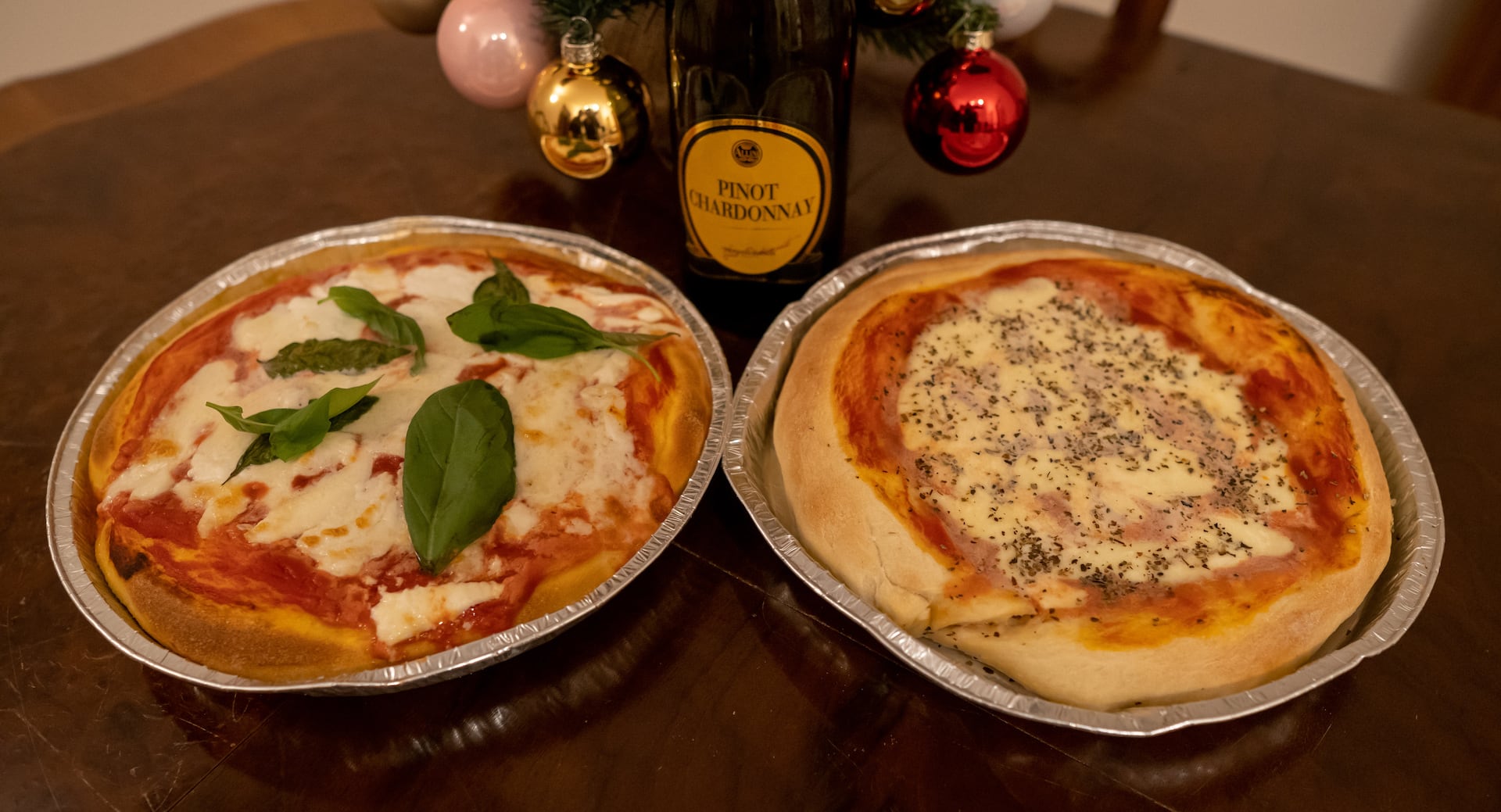
Coming to the analysis part, I will try to make a rough estimate on how much we spent on each of the pizzas with respect to the amount of each ingredient we used to make one pizza.
| Ingredients | Cheap (€) | Expensive (€) | Amount |
|---|---|---|---|
| Water | – | – | 100ml |
| Salt | – | – | 5g |
| Sugar | – | – | 2g |
| Olive oil | – | – | 5g |
| Flour | 0.09 | 0.32 | ~150g |
| Yeast | 0.11 | 0.18 | 3g |
| Tomato Sauce | 0.11 | 0.30 | 140g |
| Mozzarella | 0.53 | 1.25 | 125g |
| Basil | 0.05 | 0.25 | – |
| Total | 0.89 | 2.30 | – |
I did not account for the salt, sugar and olive oil because the amount used was almost negligible. From the above table, we can say that the pizza we made using just the cheap ingredients was ~1€ and the one with the expensive ingredients was ~2.5€. Expensive one was 1.5 times more that the cheap one, but taste wise it surpassed the cheap one. Making a pizza at home definitely saves you some money and you can learn how to make a good pizza with enough practice. Here we usually get one slice of a pizza Margherita for 1.60€. My thoughts after this experiment are that some ingredients can be replaced here and there. Of course the oil does not count so much, since we use only a negligible amount while preparing the dough. The main takeaway from this experiment would be to boil the tomato sauce a bit if it is too liquidy, and also to properly drain the water from the mozzarella or else it might make the pizza soggy and chewy.
I hope this experiment helps some of you to get an idea about the ingredients we use everyday. Wishing everyone a good year ahead with lots of pizza Margherita on your palate.